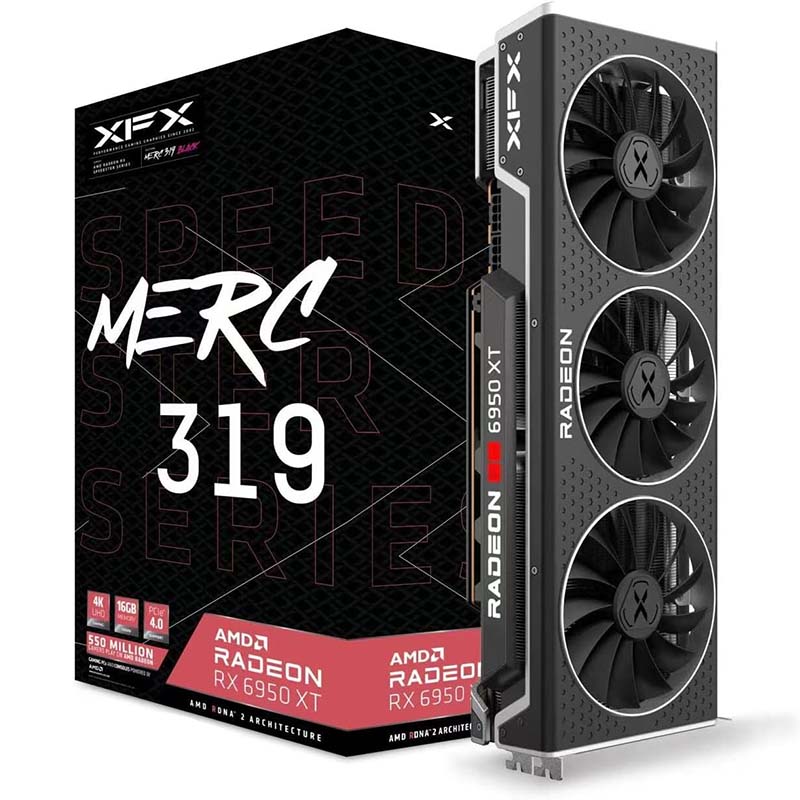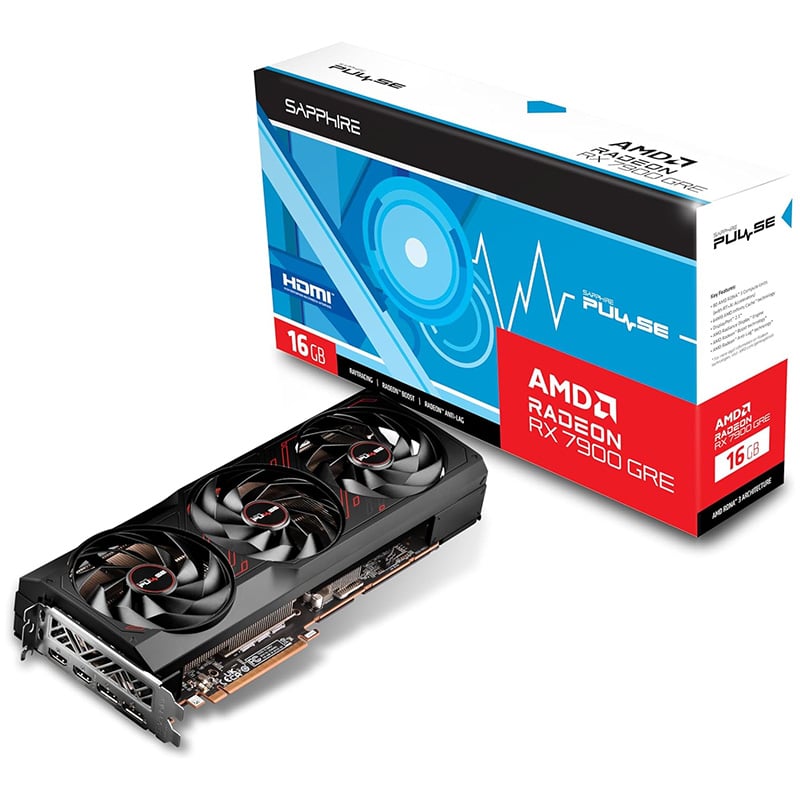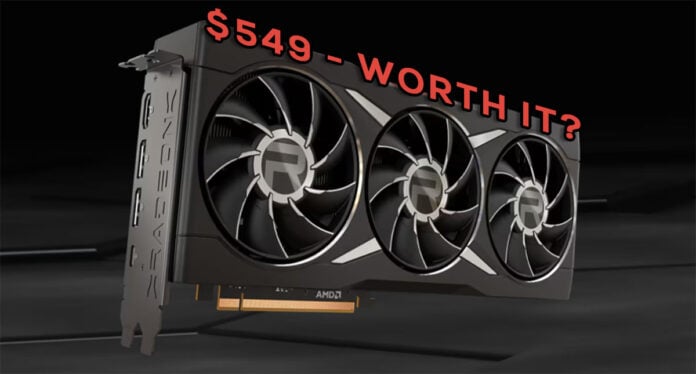Waiting for tech to fall in price is an unenviable task. Prices for decent gear aren’t coming down all that quickly in these times of rampant inflation. And as you know only too well, there’s always something shiny and new around the corner.
This quandary is particularly acute in the PC graphics scene, where soaring costs make it hard to find a genuine bargain. That isn’t to say they don’t exist, mind, as I’ve had a few friends spot the Radeon RX 6950 XT at its lowest-ever price.
Cast your memory back to 2022 and you may recall this particular GPU launched with a whopping $1,099 price tag. That was the fee for owning the best of AMD’s Radeon crop.

AMD Radeon RX 6950 XT
“The AMD Radeon RX 6950 XT desktop graphics card has 80 compute units, 128 MB of new AMD Infinity Cache, and a game frequency of 2,100MHz.”
We earn a commission if you make a purchase, at no additional cost to you.
Today, the same GPU is available for $549 from Amazon and similar bargains can be identified across the globe. Stock of these older models is naturally limited, but a reference AMD Radeon RX 6950 XT was available from Amazon UK for £557 just the other week and has been known to drop as low as £518.
Point is, if you keep an eye out, there’s a good chance you can bag the former Radeon king for half price. That’s no bad thing, right?
Last Gen vs. Current Gen
Well, it’s a little more complicated than that. Prices have taken so long to come down that newer gear prevents last-gen discounts from being classed as no brainers.
Specifically, Radeon RX 7900 GRE, launched globally earlier this year, offers similar performance at an identical $549 fee. For folk contemplating spending that sum on a new Radeon, which is the better bet? Let’s break down the specifications before adding a few benchmark results to the mix.
| Specification | RX 6950 XT | RX 7900 GRE |
|---|---|---|
| Global launch | May 2022 | Feb 2024 |
| Architecture | RDNA 2 | RDNA 3 |
| Process (nm) | 7 | 5/6 |
| Transistors (bn) | 26.8 | 57.7 |
| Die size (mm2) | 520 | 522 |
| Compute units | 80 | 80 |
| Shaders | 5,120 | 5,120 |
| Boost clock (MHz) | 2,310 | 2,245 |
| Peak FP32 TFLOPS | 47.31 | 45.98 |
| RT cores | 80 | 80 |
| AI cores | – | 160 |
| ROPs | 128 | 192 |
| Infinity / L2 Cache (MB) | 128 | 64 |
| Memory size (GB) | 16 | 16 |
| Memory type | GDDR6 | GDDR6 |
| Memory bus (bits) | 256 | 256 |
| Memory clock (Gbps) | 18 | 18 |
| Bandwidth (GB/s) | 576 | 576 |
| PCIe interface | 4.0 x16 | 4.0 x16 |
| Power (watts) | 335 | 260 |
There’s a huge amount of overlap. On paper, both GPUs are identical with regards to compute units, shaders and RT cores, as well as memory size, clock and bandwidth! It’s no wonder folk wonder which is the right GPU for them.
Radeon RX 6950 XT vs. Radeon RX 7900 GRE
Let’s get the obvious out of the way first. For gaming performance, there isn’t going to be a great deal separating the two. Both tout 5,120 shaders fed to 16GB of GDDR6 18Gbps memory via a 256-bit bus. 192 ROPs on 7900 GRE vs. 128 on 6950 XT provide a little extra back-end assistance, though the older GPU’s doubling of Infinity Cache and higher core clock will help offset that perceived deficiency.
| Benchmark | RX 6950 XT | RX 7900 GRE |
|---|---|---|
| 3DMark Time Spy | 19,876 | 19,558 |
| 3DMark Time Spy Extreme | 10,169 | 10,056 |
| 3DMark DirectX Raytracing | 29.0 | 42.5 |
| Assassin’s Creed Valhalla – FHD | 175 | 161 |
| Assassin’s Creed Valhalla – QHD | 132 | 127 |
| Assassin’s Creed Valhalla – UHD | 75 | 73 |
| Final Fantasy XIV: Endwalker – FHD | 218 | 211 |
| Final Fantasy XIV: Endwalker – QHD | 181 | 167 |
| Final Fantasy XIV: Endwalker – UHD | 112 | 95 |
There’s not a great deal in it, yet strictly speaking, RX 6950 XT maintains a minor lead with regards to pure rasterisation. The tables turn in newer workloads such as raytracing and AI, with 7900 GRE displaying nearly a 50% uptick in the 3DMark DirectX Raytracing test.
You have to look past the core gaming experience to identify key points of differentiation. First and foremost, Radeon RX 7900 GRE employs AMD RDNA 3 architecture, whose chiplet design places an emphasis on efficiency. You can explore the ins and outs of RDNA 3 in the Club386 deep dive, but for the matter at hand, 7900 GRE’s smarter design reflects in a 260W TDP.
That 22% reduction will noticeably lower running costs. When gaming, I recorded system-wide power consumption of 535W with Radeon RX 6950 XT installed. That figure drops to 381W with Radeon RX 7900 GRE. Putting those figures into perspective, an eight-hour gaming session would cost £1.05 with the Radeon RX 6950 XT in my rig, or 75p with RX 7900 GRE. Doesn’t sound like much, but if I were fortunate enough to game for eight hours a day, every day, I’d be looking at an annual saving of £110.
And this, ultimately, is the crux of the matter. While Radeon RX 6950 XT still packs a hefty punch, RX 7900 GRE’s efficient, forward-looking design is the safer overall bet. You can’t go wrong with either for high-quality gameplay, especially if the price is right, but it’s the newer card you should be leaning toward.

AMD Radeon RX 7900 GRE
“Featuring 80 unified AMD RDNA 3 compute units, harness the power of advanced AI technology and raytracing accelerators to enable an incredible enthusiast desktop experience at 1440p and 4K.”
We earn a commission if you make a purchase, at no additional cost to you.


